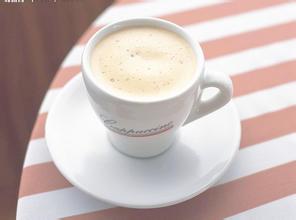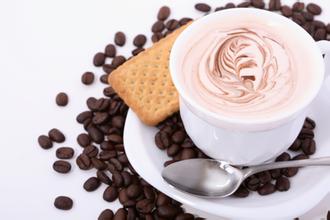Introduction to the flavor description and treatment of Dominican coffee with a winding aftertaste
Coffee in Dominica has two main characteristics, which vary according to the region and variety of coffee produced. Tibica coffee, produced in the main producing area of Baraona, has a soft taste and light aroma peculiar to the Caribbean. The highland coffee in Siwao in the central mountain area has a strong taste-the two producing areas have their own characteristics located in the Jarabacoa region near Siwao, and have the largest farm in Dominica-Ramirez Manor (RamirezEstates), which mainly grows Kaddura varieties, and most of the coffee produced is sold to Europe, the United States and other Western countries and regions. Ramirez Manor itself produces coffee in an environmentally friendly way.
Coffee in Dominica is graded in sizes such as AA and AB, but it is classified as top grade by coffee from highlands such as Sivao and Baraona. Both kinds of coffee are harvested from February to May and are refined by washing.
The name Dominica, which originally means "Sunday", was taken by Columbus when he first came to America to discover it, because it happened to be a Sunday. This seemingly random name seems to be far-sighted today, because a good cup of coffee can bring people a relaxed and pleasant mood, isn't that how we yearn for weekends after a busy week?
The Dominican Republic has also experienced a history of unrest and poverty, and now the country has implemented democratic elections and entered a period of stable development, but it has not yet formally established diplomatic relations with China, but has maintained so-called "diplomatic relations" with Taiwan. It seems that this has nothing to do with coffee, but in fact, it still has an impact. The exchanges between the two countries that have not established diplomatic relations are subject to many restrictions in all aspects, of course, it will also affect our coffee trade. Dominican coffee is mainly exported to the United States and a small number of European countries because of its superior quality, which is rarely seen in our Chinese mainland. The temperate climate in Dominica is conducive to coffee cultivation, and the best places to grow coffee are the Barahona region in the southwest and the Cibao Valley north of Santiago, Dominica's second largest city. The northern region, represented by Hibao, and the southern region, including Okayabani Santo Domingo, produce good coffee. Among them, the coffee produced by Santo Domingo and Barney is famous all over the world, and Dominica coffee is almost synonymous with domiga coffee. Dominica coffee varies slightly according to the altitude of the planting region, the highland is sour, but the taste is rich; the lowland is less sour and tastes smoother. The high-quality coffee beans produced by some Dominican estates have a rich aroma, mellow taste and moderately bright sour taste, and are often compared with those from Puerto Rico or Jamaica.
Coffee in Dominica is selected by the most expensive manual method, and workers choose the main consideration, one is the fullness of coffee particles, the other is whether it is uniform, and it is graded according to these conditions. the coffee beans with the fullest and most uniform grains can represent the best and best coffee in Dominica. And only use the washing treatment method to ensure the high quality and stability of the coffee beans. the coffee beans treated with water washing have a cleaner taste and emit a touch of pure and soft aroma, which can make people feel a faint fruity aroma and a winding aftertaste. Smooth and smooth

Important Notice :
前街咖啡 FrontStreet Coffee has moved to new addredd:
FrontStreet Coffee Address: 315,Donghua East Road,GuangZhou
Tel:020 38364473
- Prev

Introduction to the planting environment of the characteristic varieties of Puerto Rico coffee in the producing area
Puerto Ricans are the general name of the residents of United States Puerto Rico in Central America and the Caribbean. There are about 3.4 million people (1979). Spanish and English are widely used. More Catholic. The earliest inhabitants of Puerto Rico were Arawak and Caribbean Indians. In 2012, whites of European origin accounted for about 73% of the population, mixed-race people accounted for 23%, and blacks accounted for 4%. There are more than 20,000 Americans and others.
- Next

Introduction to the characteristics of Panamanian Cupid Coffee Flavor description and Grinding degree treatment
The Panamanian flag was launched on November 3, 1904. The flag is rectangular and the ratio of length to width is 3:2. The flag consists of four rectangles of white, red and blue. White symbolizes peace; red and blue represent the former Panamanian Liberal Party and the Conservative Party respectively, and they are also symbols of the two parties' United struggle for the interests of the nation. The blue star on the white background on the upper left represents loyalty and integrity, and the red star on the white background on the lower right represents
Related
- Detailed explanation of Jadeite planting Land in Panamanian Jadeite Manor introduction to the grading system of Jadeite competitive bidding, Red bid, Green bid and Rose Summer
- Story of Coffee planting in Brenka region of Costa Rica Stonehenge Manor anaerobic heavy honey treatment of flavor mouth
- What's on the barrel of Blue Mountain Coffee beans?
- Can American coffee also pull flowers? How to use hot American style to pull out a good-looking pattern?
- Can you make a cold extract with coffee beans? What is the right proportion for cold-extracted coffee formula?
- Indonesian PWN Gold Mandrine Coffee Origin Features Flavor How to Chong? Mandolin coffee is American.
- A brief introduction to the flavor characteristics of Brazilian yellow bourbon coffee beans
- What is the effect of different water quality on the flavor of cold-extracted coffee? What kind of water is best for brewing coffee?
- Why do you think of Rose Summer whenever you mention Panamanian coffee?
- Introduction to the characteristics of authentic blue mountain coffee bean producing areas? What is the CIB Coffee Authority in Jamaica?

